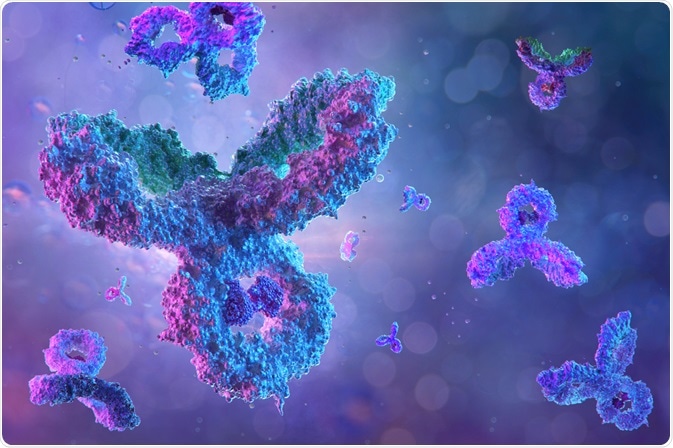The acquisition of immunity to a disease that a patient has already faced has been recorded for many hundred years.
There is an argument that, during the period 1714-1717, some of the earliest work, which has now become known as immunology, was successfully done. James Pylarini, Emanuel Timoni, and Lady Mary Wortley Montagu successfully inoculated smallpox, which is considered a breakthrough during this time. Variolation is based on using live smallpox virus in the liquid obtained from a blister of mild smallpox case.
In 1798, Edward Jenner performed the first smallpox vaccination by inoculating a boy with the fluid from a cowpox pustule providing him immunity to smallpox. In 1890, the earliest reference to antibodies was from Emil von Behring and Kitasato Shibasaburo who transferred serum from animals immunized against diptheria to animals suffering from it, which can help in curing the infected animals. In 1901, Behring was later awarded the Nobel Prize for this pioneering work.

Antibodies. Image Credit: Corona Borealis Studio/Shutterstock.com
The side-chain theory and the selective theory
In 1900, Paul Ehrlich, who is considered to be one of the fathers of modern immunology, proposed the side-chain theory, where he supposed that living cells have side chains similar to the side chain of dyes which are correlated to their coloring features. He proposed that living cell side chains could bind to a particular antigen or toxin.
Ehrlich was the first one to propose a model that antibody molecule is branched with many binding sites for foreign materials (antigens), and the activation of the complement cascade or pathway. He also hypothesized that (under threat) a cell could have additional side chains for binding to the toxin, and these extra side chains can break off to become free circulating antibodies through the body. He also hypothesized that the surface of leukocytes is covered with multiple side chains that can form chemical links with the antigens.
In 1940, Karl Landsteiner and Alexander S. Weiner discovered the Rh blood group system. Among several distinct Rh antigens, RhD is the primary determinant of the Rh trait and is the most severe immune reaction. At the beginning of the 20th century, the Austrian scientist, Karl Landsteiner demonstrated the ABO blood group system by observing that red blood cells of some individuals were agglutinated by the serum from other individuals.
In the 1920s, Oswald Avery and Michael Heidelberger noticed that antibodies can precipitate antigens and they reported that antibodies are protein in nature.
Nature of antibodies
Breinl and Haurowitz hypothesized that antibodies could acquire their antigen specificity through the folding of the newly synthesized nascent polypeptide chain around the antigen. In the late 1930s, professor John Richardson Marrack examined the biochemical properties of antigen-antibody binding interactions in more detail.
In the next few decades, ongoing researches showed that the protective serum neutralizes and precipitates toxins and clumps bacteria. Antitoxin, precipitin, and agglutinin were the biomolecule responsible for these actions. In 1939, Elvin A. Kabat found that antitoxin, precipitin, and agglutinin were indeed one entity, not three as was previously thought.
In the early 1940s, the immunologist Merrill W. Chase discovered cell-mediated immunology through discovering that white blood cells, and not antibodies alone, were important for the immune system. He successfully transferred white blood cells against tuberculosis between pigs, making a successful transfer of immunity.
Lock and key theory
In the 1940s, Linus Pauling emphasized the lock-and-key theory, which was proposed by Ehrlich. Pauling showed that the interactions between antigens and antibodies depended more on their shapes than their chemical compositions.
In 1948, the Swedish immunologist Astrid Fagraeus found that plasma B cells are specifically involved in the production of antibodies. In 1959, Professor Sir James Gowans reported that lymphocytes play an important role in mediating both humoral and cell-mediated responses.
Clonal selection theory
In the late 1950s, Frank Burnet and David Talmage developed the clonal selection theory. This theory stated that a lymphocyte produces a single specific antibody molecule that is pre-determined before it comes in contact with an antigen, a theory that is opposite to instructive theory, which was proposed by Linus Pauling in 1940 stating that the antigen worked as an antibody template. Clonal selection theory explains the diversity of antibody specificity.
Primary and secondary structure of antibodies
By 1959, Gerald M. Edelman and Rodney R. Porter independently published the molecular structure of antibodies, for which they were later jointly awarded the Nobel Prize in Physiology or Medicine in 1972 for their pioneering discoveries concerning the chemical structure of antibodies. They split up antibodies into smaller parts and mapped their biological effects using different chemical methods, allowing them to determine the structure of antibodies. They found that the antigen-binding domains of antibodies (Fab) have amino acids from both the light and heavy protein subunits.
The two parts of the antigen-binding domain are brought together by the inter-chain disulfide bonds. Rolf Zinkernagel and Peter C. Doherty discovered the role of major histocompatibility complex (MHC) in antigen presentation in 1974.
Monoclonal antibodies
In 1975, Georges Köhler and César Milstein found the key to monoclonal antibodies, signaling the start of the modern era of antibody discovery and research. These monoclonal antibodies were obtained from the progeny of a single immune cell, and they were pure and available in high quantities. Susumu Tonegawa cloned the first antibody gene in 1976.
Sources:
- Behring, Emil von. "About the development of diphtheria immunity and tetanus immunity in animals." 19th-century prints (1890).
- Pauling, Linus. "A theory of the structure and process of formation of antibodies." Journal of the American Chemical Society 62.10 (1940): 2643-2657.
- Marrack, John. "Nature of antibodies." Nature 133.3356 (1934): 292-293.
- Isliker, Henry C. "The chemical nature of antibodies." Advances in protein chemistry 12 (1957): 387-463.
Further Reading
Last Updated: Aug 4, 2021